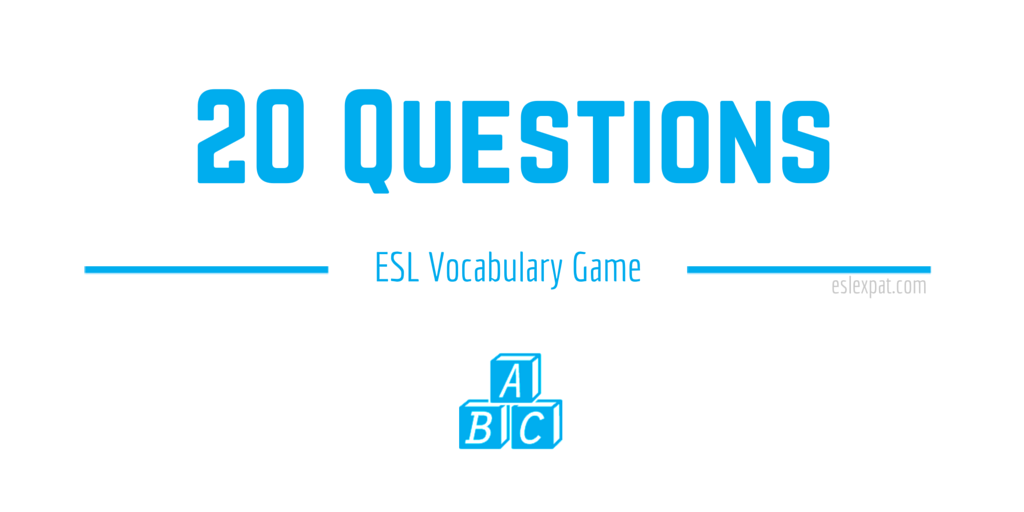|
Download ESL Books + Free PDFs
ESL Vocabulary Flashcards Download free flashcards & PDFs! |
This is a fun activity for encouraging students to ask “yes” or “no” questions about a “mystery word” that someone is thinking of. The 20 Questions ESL Game can be used as a good way to review any type of vocabulary that you have already covered in class.
Student Level: Beginner, Intermediate

20 Questions ESL Game Preparation:
Pre-class preparation for this activity isn’t really necessary. Though, if you want, you could think of a few objects, people or things that you want your students to think about for answers to the game.
20 Questions ESL Game Guidelines:
A good way to start the game is by drawing a face on the board with a bubble rising out of it. Put a question mark inside the bubble. This signifies that you’re thinking of a word (or phrase) that they need to guess.
Then, write a series of “close-ended” questions below the face, such as:
“Is it a person, place, or thing?”
“Does it live in the jungle?”
“Does it like cheese?” etc.
Tell them to use these types of questions that elicit either a “Yes” or “No” response. If the students’ levels are high enough, simply explain the rules verbally.
Next, model an example before setting up the competition. Think of a simple word, like something that is easily visible in the classroom. You could even give them a hint first to speed things along.
They have 20 chances to guess the correct answer. If they burn all 20 questions then tell them what the mystery word is and start another round.
Optionally, possibly provide a hint after about 10 questions if you think it will help if they are having too much difficulty. Another way to play is to only “burn” a question if there is a “No” response.
The student who guesses what the correct word is can come up to the front of the class and think of another “mystery word.” If they prefer not to be the center of attention, tell them to nominate someone else to do it.
If they prefer not to be the center of attention, tell them to nominate someone else who would like to do it.
After a few rounds, finish the activity and review any difficulties that they had with the concepts or vocabulary.
Lastly, you may also want to get the students to do mini-versions of the game in smaller groups. This may work better especially if the class size is quite large. This will increase student talk time and give them more time to interact with each other.
Follow-Up ESL Activities:
Have the class do something extra with the words that were used in the 20 questions game. For example, have them write some sentences with the words. Perhaps try a follow-up activity like the fun Battleships ESL Game or the Board Race ESL Game using the vocabulary in discussion.
More ESL Vocabulary Games for Kids and Adults:
- I Spy
- No Harm No Vowel
- To Be
- Halloween
- Comparatives
- Prepositions
- Body Parts
- Toilet Paper
- Have You Ever
- Tic Tac Toe
- Word Whack
- Hangman
- Hot Seat
- Simon Says
- Pass the Marker
- Memory Race
- Board Race
- Word Chain
- Mystery Word
View the vocabulary games archive.

